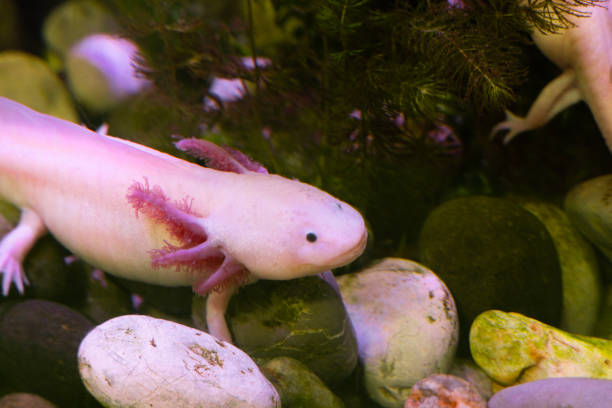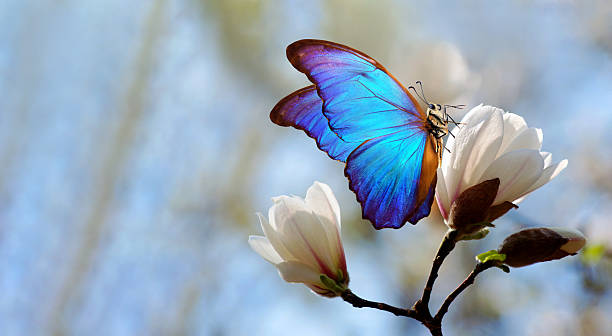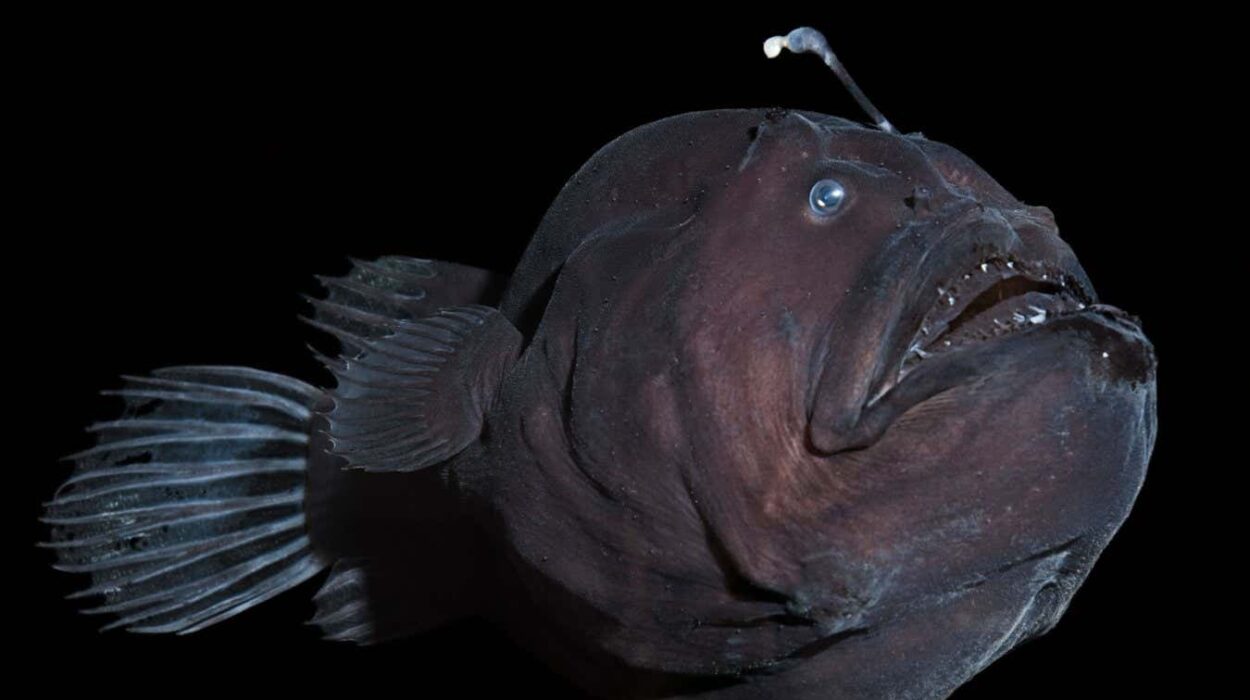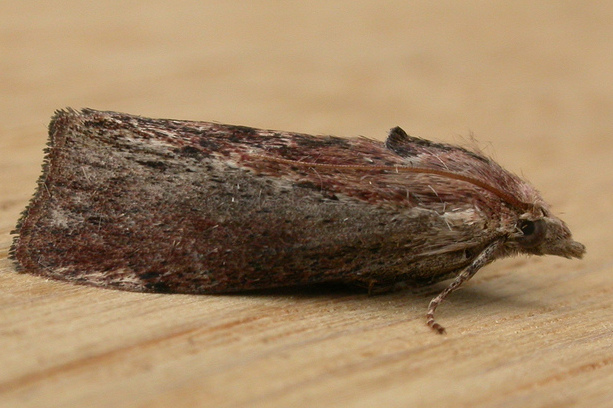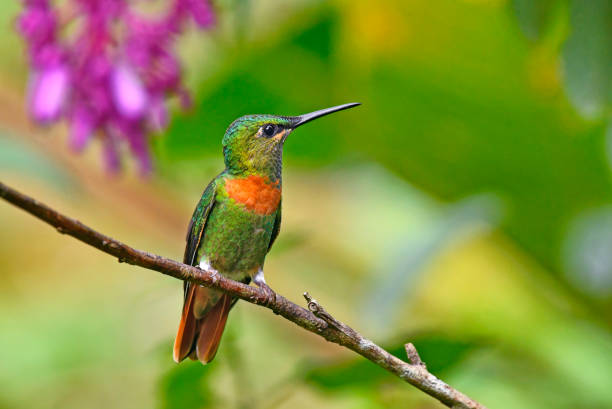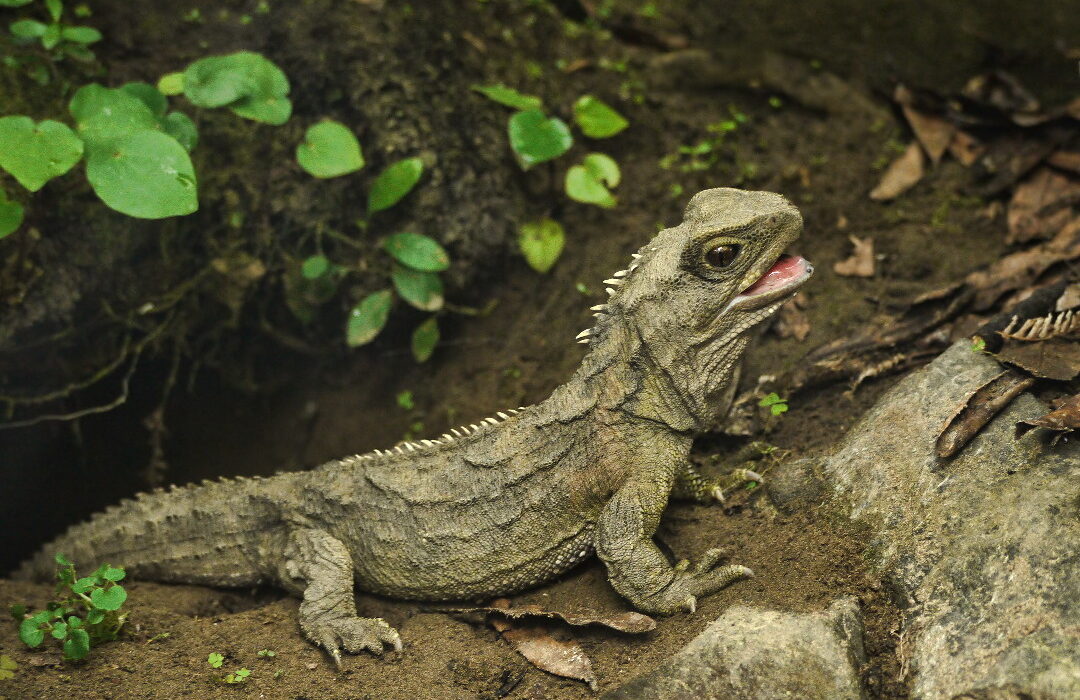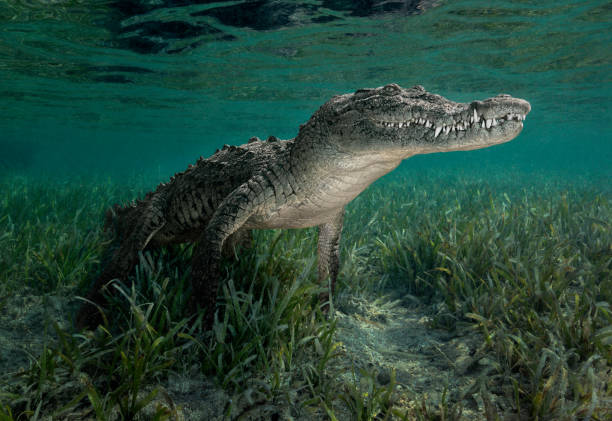Imagine a world where losing a limb isn’t the end of it—a world where a tail, an arm, or even a heart could grow back, as good as new. For some creatures, this isn’t fantasy—it’s everyday biology. Across the animal kingdom, there exist beings whose very cells hold the secret to rebirth. From humble worms to majestic salamanders, these animals remind us of nature’s astonishing power to renew and repair itself.
Regeneration is more than a biological trick—it’s the poetry of survival. It’s evolution’s way of saying, “Life goes on.” For humans, it’s a glimpse into what could one day be possible through science and medicine. Let’s journey into the world of fifteen incredible animals that can regrow parts of their bodies, and explore what their abilities reveal about the resilience of life itself.
1. Axolotl – The Immortal Salamander
If nature had a symbol of eternal youth, it would be the axolotl. Found in the lakes of Mexico, this adorable salamander, with its feathery gills and perpetual smile, can regenerate almost any part of its body—including limbs, spinal cord, heart tissue, and even parts of its brain.
Unlike most amphibians, axolotls never fully mature into land-dwelling adults. They remain in a state called neoteny, retaining juvenile features throughout their lives. But this youthfulness comes with a gift: unparalleled regenerative powers.
When an axolotl loses a limb, cells near the wound site revert to a stem-cell-like state, forming a structure known as a blastema. From this blastema, a new limb grows—complete with bones, muscles, nerves, and skin. It’s not a scarred replica, but a perfect copy.
Scientists have been studying axolotls for decades, hoping to uncover how they manage this miracle. Their genome—ten times larger than ours—contains clues that could one day revolutionize regenerative medicine. The axolotl is not just a survivor; it’s a promise of what biology might one day allow humans to achieve.
2. Starfish – The Cosmic Healers of the Sea
Starfish, or sea stars, may look simple, but they are among the ocean’s most remarkable regenerators. Lose an arm? No problem. A starfish can regrow it—and in some cases, even regenerate an entire body from a single arm.
Beneath their tough, spiny exteriors lies a hidden complexity. Each arm houses parts of the starfish’s digestive and nervous systems, giving it the autonomy to heal independently.
When a starfish loses a limb, specialized cells at the wound site begin dividing rapidly. Within weeks, a new arm begins to form, slowly taking shape until it becomes indistinguishable from the original.
This extraordinary ability isn’t just about survival; it’s also about reproduction. Some starfish reproduce asexually by splitting themselves in two and growing into separate individuals. In a sense, they are born from their own fragments—a living symbol of resilience and rebirth.
3. Planarian Flatworm – The Master of Regeneration
In the mysterious world of microscopic life, the planarian flatworm reigns supreme as the ultimate regenerator. Cut one into ten pieces, and each piece will grow into a complete new worm.
The secret lies in their abundance of neoblasts—stem cells that make up roughly 20% of their bodies. These cells are like biological clay, capable of transforming into any type of tissue needed.
If a planarian loses its head, a new one grows, complete with a functioning brain and eyes. Scientists have even observed that regenerated planarians retain memories from their previous forms, suggesting that memory may reside not only in the brain but within the body itself.
Their ability is so profound that researchers are studying them to understand how stem cells might help humans regenerate organs, heal spinal injuries, or even slow aging. The planarian isn’t just a worm—it’s a window into the future of biology.
4. Sea Cucumber – The Ocean’s Living Transformer
The sea cucumber, a soft-bodied relative of starfish and sea urchins, has one of the strangest survival tactics in the ocean: when threatened, it ejects its internal organs, only to regrow them later.
This dramatic act, called evisceration, serves as both defense and renewal. By expelling its guts, the sea cucumber distracts predators and escapes while the lost organs regenerate over the following weeks.
Their ability extends to regenerating parts of their respiratory and reproductive systems. Specialized cells migrate to the wounded areas, reorganizing into new tissues and restoring full functionality.
The sea cucumber’s talent for self-repair doesn’t just inspire awe—it’s also inspiring medicine. Scientists are studying its collagen-based tissues for potential applications in wound healing and anti-aging therapies.
In the depths of the sea, the sea cucumber teaches us that even loss can be the beginning of renewal.
5. Zebrafish – The Healer with a Heart
Tiny but mighty, the zebrafish has become one of science’s most important models for regeneration research. Native to freshwater streams in South Asia, this striped fish can regrow fins, skin, spinal cord tissue, and even parts of its heart.
When a zebrafish’s heart is injured, specialized cells near the wound begin to multiply rapidly, replacing damaged tissue with new, fully functional cells. In just a few weeks, the heart beats as if nothing happened.
This ability has fascinated medical researchers, as it offers a potential roadmap for treating human heart disease. Unlike mammals, zebrafish suppress scar formation, allowing perfect tissue regeneration.
They’re also capable of regenerating parts of their retinas, suggesting that understanding zebrafish biology might one day help cure blindness. In their small, shimmering bodies lies the blueprint for humanity’s most ambitious medical dreams.
6. Green Iguana – The Tail That Lives Again
Anyone who’s ever seen an iguana drop its tail knows how startling the sight can be. But for these reptiles, it’s all part of nature’s plan. When threatened, a green iguana can detach its tail—a behavior known as autotomy—to distract predators and escape.
Within months, a new tail begins to grow. The replacement isn’t identical—it lacks the original’s bones and instead contains a flexible cartilage structure—but it’s fully functional.
The regeneration process begins almost immediately, as blood clotting cells seal the wound to prevent infection. Then, stem cells at the base of the tail activate, producing cartilage, muscle, and skin.
Scientists have found that juvenile iguanas regenerate more efficiently than adults, hinting at the link between age and regenerative potential. Still, even partial regrowth is a stunning evolutionary feat—a built-in second chance, quite literally attached to the body.
7. Deer – The Antler Regenerators
Each year, male deer perform one of nature’s most dramatic acts of regeneration: growing new antlers from scratch. These bony structures can grow up to an inch per day, making them one of the fastest-growing tissues in the animal kingdom.
The process begins with pedicles, bony protrusions on the skull that act as the base for new antlers. During spring, rising testosterone levels trigger the rapid growth of velvet-covered antlers, rich in blood vessels and nerves.
When mating season ends, the antlers are shed, and the cycle begins anew. The regrowth relies on stem cells at the base of the pedicles—cells with astonishing regenerative power.
Scientists studying deer antlers hope to uncover how these stem cells regenerate bone so effectively, with potential applications for treating fractures, arthritis, and even limb regeneration in humans.
In the quiet forests, deer carry an annual reminder that regrowth is not rare—it’s a rhythm of life.
8. Octopus – The Tentacled Healer
The octopus is one of the ocean’s most intelligent and adaptable creatures—and it’s also a master of regeneration. If an octopus loses an arm to a predator, it can regrow it completely, nerve endings and all.
This ability is essential for survival. Their arms are tools of exploration and defense, containing two-thirds of the octopus’s neurons. When lost, the regrowth process begins immediately, starting with wound healing and followed by tissue reconstruction.
What’s remarkable is how perfectly the new arm functions. Once fully grown, it can sense, grasp, and taste just like the original.
Octopuses even exhibit behavioral adaptation during regrowth, temporarily favoring remaining arms until the new one matures. Their regeneration showcases a balance of intelligence, adaptation, and resilience that few animals can match.
9. Crayfish – The Rebuilding Crustacean
Crayfish, those armored freshwater relatives of lobsters, are among the few crustaceans that can regenerate claws, legs, and antennae.
When a crayfish loses a claw, the wound seals quickly, and regeneration begins with the formation of a small bud. Over successive molts, the new claw grows larger, eventually returning to its original size and strength.
This process is driven by molting cycles—the periods when crayfish shed their exoskeletons to grow. Each molt provides an opportunity for repair and renewal.
Crayfish regeneration serves both survival and function, allowing them to hunt, defend, and mate effectively even after injury. Their ability is so efficient that biologists are studying how hormonal regulation influences regrowth in arthropods.
In the muddy waters where they thrive, crayfish are living symbols of patience and perseverance—building themselves anew, one molt at a time.
10. Salamanders – The Magicians of Regrowth
Salamanders are perhaps nature’s most famous regenerators after axolotls. From newts to tiger salamanders, these amphibians can regrow limbs, tails, spinal cords, and even parts of their eyes.
When injured, salamanders form a blastema, much like axolotls, allowing complete limb regeneration without scarring. Their nerve endings also reconnect perfectly—a feat mammals can’t achieve.
In some species, even the lens and retina of the eye can regenerate, restoring full vision. This makes salamanders invaluable to scientists studying neural regeneration and healing.
Their bodies seem to exist in a state of perpetual readiness to rebuild. For them, injury is not an ending but a beginning—a call for renewal.
11. Flatfish – The Regenerating Swimmers
Flatfish, like flounders and soles, are known for their unusual body structure, but they also possess the ability to regenerate fins and parts of their tails.
When injured, new tissue forms rapidly, restoring movement and balance. This ability helps them survive in their sandy seabed habitats, where predators lurk above.
Researchers have found that fin regeneration in fish shares many genetic pathways with limb regeneration in amphibians, suggesting that nature’s blueprint for regrowth might be ancient—and perhaps universal.
The humble flatfish may not dazzle with color or song, but beneath its quiet surface lies the silent power of renewal.
12. Earthworm – The Underground Survivor
The earthworm may seem simple, but its regenerative powers are astonishing. Cut one in half, and depending on the species and cut location, the front half can regrow its tail—and sometimes even its entire back end.
Their bodies are made up of repeating segments, each containing nerves and muscles that allow regrowth. The process begins when stem cells at the wound site multiply, rebuilding lost tissues over weeks.
Not all cuts are survivable, but the ability to regenerate gives earthworms a critical advantage underground, where injuries are common.
In the soil, they recycle life, aerate earth, and quietly remind us that resilience runs deep—sometimes literally.
13. Spiny Mouse – The Mammal That Heals Without Scars
Among mammals, true regeneration is rare—but the spiny mouse breaks the rule. Native to Africa, this small rodent can regenerate skin, hair follicles, cartilage, and even parts of its ears without scarring.
Unlike typical mammals, spiny mice produce special proteins that suppress inflammation and promote new tissue growth instead of scar tissue. Their ability to heal so perfectly has captured the attention of scientists studying human wound repair.
Experiments show that within weeks, spiny mice can close deep wounds and regrow missing tissue with full function restored. It’s as if evolution gave mammals one small glimpse of the power most animals left behind.
Their fragile bodies conceal an extraordinary strength—the ability to restore wholeness where others cannot.
14. Sea Slug (Elysia cf. marginata) – The Creature That Regrows Its Entire Body
Perhaps the strangest regenerator of all, the Elysia cf. marginata sea slug can literally decapitate itself—and regrow its entire body from its head.
Scientists first observed this shocking phenomenon when a sea slug’s severed head crawled away and began regenerating a new heart, digestive system, and body over several weeks.
How does it survive without a body? By photosynthesis. These sea slugs steal chloroplasts from the algae they eat and use them to produce energy—a process called kleptoplasty.
Their regeneration pushes the boundaries of biology, challenging our understanding of life and consciousness. The Elysia sea slug doesn’t just heal—it redefines what it means to live.
15. Lobster – The Ever-Growing Marvel
The lobster is a creature that never stops growing—and it can regrow lost claws, legs, and antennae throughout its life.
Their regenerative ability is linked to their molting process. Each time a lobster sheds its exoskeleton, damaged limbs regrow stronger and more functional. This constant renewal also slows aging; lobsters can live for over a century and remain fertile throughout.
They regenerate by producing new tissue under the old shell before molting, allowing seamless restoration once the new exoskeleton hardens.
To lose a limb for a lobster isn’t a tragedy—it’s an opportunity for renewal. In the dark depths of the sea, they are living testaments to nature’s patience and persistence.
The Science of Regeneration
Across all these creatures, a pattern emerges: regeneration depends on stem cells, genetic control, and the ability to suppress scarring. Where humans heal with scars, these animals heal with restoration.
Understanding these mechanisms could revolutionize medicine—unlocking ways to regrow organs, repair spinal injuries, and regenerate limbs. Already, axolotls and zebrafish are helping scientists decode how to reawaken dormant regenerative genes in humans.
The Philosophy of Renewal
Regeneration isn’t just a biological phenomenon—it’s a metaphor for life itself. In the natural world, destruction and creation are part of the same dance. What is lost can be remade. What is broken can be reborn.
From the humble worm to the mighty deer, these animals remind us that life’s story is one of resilience, adaptation, and endless renewal.
In every regrown limb, in every reborn tail, nature whispers the same truth—nothing truly ends; it simply begins again.
